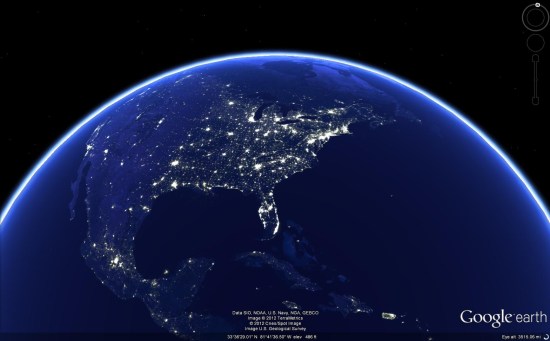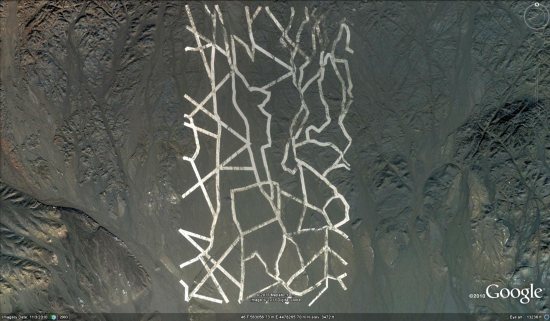The “Earth at Night” layer remains a very unique way to view the earth. Captured on the “dark side” of the planet, depending on the time of day, the images are a striking visual of the more urbanized areas of the planet.

However, the images were not easy to capture. For years, astronauts would try to capture the bright lights and only have blurry photographs to show for it, as the earth travels beneath them at 4.4 miles/second.
In 2003, Don Pettit developed an innovative system for capturing these images and he went on to capture over 2,500 photos, with thousands more captured in subsequent missions. You can read more about Don and his technique in this article at Air & Space Magazine.
To see the lights for yourself, simply click on the [Layers] in Google Earth, open [NASA], then [Earth City Lights] and click the button in there.. For the best results, disable your other layers and places to get a nice clean view of the earth. You should likely disable the atmosphere as well (under [View] –> [Atmosphere]), but I kind of like the glow it gives. It’s a neat effect.
A big thanks to Don for pioneering this amazing technique, and hopefully as time goes on this imagery will become even higher-quality and more striking.

